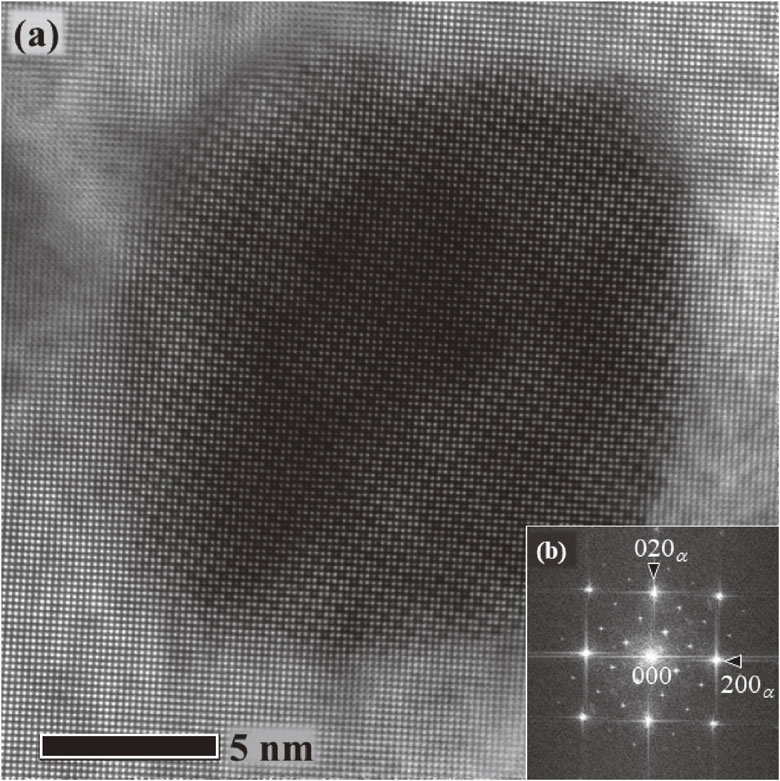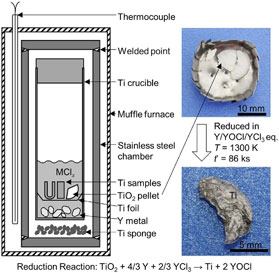61 巻, 10 号
選択された号の論文の19件中1~19を表示しています
- |<
- <
- 1
- >
- >|
Regular Article
Materials Physics
-
原稿種別: Regular Article
2020 年 61 巻 10 号 p. 1895-1899
発行日: 2020/10/01
公開日: 2020/09/25
[早期公開] 公開日: 2020/08/21PDF形式でダウンロード (2917K) HTML形式で全画面表示 -
原稿種別: Regular Article
2020 年 61 巻 10 号 p. 1900-1906
発行日: 2020/10/01
公開日: 2020/09/25
[早期公開] 公開日: 2020/08/07PDF形式でダウンロード (7684K) HTML形式で全画面表示 -
原稿種別: Regular Article
2020 年 61 巻 10 号 p. 1907-1911
発行日: 2020/10/01
公開日: 2020/09/25
[早期公開] 公開日: 2020/08/07PDF形式でダウンロード (2704K) HTML形式で全画面表示
Microstructure of Materials
-
原稿種別: Regular Article
2020 年 61 巻 10 号 p. 1912-1921
発行日: 2020/10/01
公開日: 2020/09/25
PDF形式でダウンロード (6999K) HTML形式で全画面表示
Mechanics of Materials
-
原稿種別: Regular Article
2020 年 61 巻 10 号 p. 1922-1929
発行日: 2020/10/01
公開日: 2020/09/25
PDF形式でダウンロード (6162K) HTML形式で全画面表示
Materials Chemistry
-
原稿種別: Regular Article
2020 年 61 巻 10 号 p. 1930-1939
発行日: 2020/10/01
公開日: 2020/09/25
PDF形式でダウンロード (1985K) HTML形式で全画面表示 -
原稿種別: Regular Article
2020 年 61 巻 10 号 p. 1940-1948
発行日: 2020/10/01
公開日: 2020/09/25
PDF形式でダウンロード (4240K) HTML形式で全画面表示 -
原稿種別: Regular Article
2020 年 61 巻 10 号 p. 1949-1957
発行日: 2020/10/01
公開日: 2020/09/25
[早期公開] 公開日: 2020/08/21PDF形式でダウンロード (4380K) HTML形式で全画面表示 -
原稿種別: Regular Article
2020 年 61 巻 10 号 p. 1958-1966
発行日: 2020/10/01
公開日: 2020/09/25
[早期公開] 公開日: 2020/08/21PDF形式でダウンロード (6328K) HTML形式で全画面表示 -
 原稿種別: Regular Article
原稿種別: Regular Article
2020 年 61 巻 10 号 p. 1967-1973
発行日: 2020/10/01
公開日: 2020/09/25
Materials Processing
-
原稿種別: Regular Article
2020 年 61 巻 10 号 p. 1974-1980
発行日: 2020/10/01
公開日: 2020/09/25
[早期公開] 公開日: 2020/08/21PDF形式でダウンロード (1589K) HTML形式で全画面表示 -
原稿種別: Regular Article
2020 年 61 巻 10 号 p. 1981-1986
発行日: 2020/10/01
公開日: 2020/09/25
[早期公開] 公開日: 2020/08/21PDF形式でダウンロード (4332K) HTML形式で全画面表示 -
原稿種別: Regular Article
2020 年 61 巻 10 号 p. 1987-1993
発行日: 2020/10/01
公開日: 2020/09/25
[早期公開] 公開日: 2020/08/21PDF形式でダウンロード (4015K) HTML形式で全画面表示 -
原稿種別: Regular Article
2020 年 61 巻 10 号 p. 1994-2001
発行日: 2020/10/01
公開日: 2020/09/25
[早期公開] 公開日: 2020/08/28PDF形式でダウンロード (4385K) HTML形式で全画面表示 -
原稿種別: Regular Article
2020 年 61 巻 10 号 p. 2002-2007
発行日: 2020/10/01
公開日: 2020/09/25
PDF形式でダウンロード (2777K) HTML形式で全画面表示
Engineering Materials and Their Applications
-
原稿種別: Regular Article
2020 年 61 巻 10 号 p. 2008-2016
発行日: 2020/10/01
公開日: 2020/09/25
PDF形式でダウンロード (3255K) HTML形式で全画面表示 -
原稿種別: Regular Article
2020 年 61 巻 10 号 p. 2017-2024
発行日: 2020/10/01
公開日: 2020/09/25
PDF形式でダウンロード (4244K) HTML形式で全画面表示
Environment
-
原稿種別: Regular Article
2020 年 61 巻 10 号 p. 2025-2029
発行日: 2020/10/01
公開日: 2020/09/25
[早期公開] 公開日: 2020/09/04PDF形式でダウンロード (1662K) HTML形式で全画面表示
Technical Article
-
原稿種別: Technical Article
2020 年 61 巻 10 号 p. 2030-2039
発行日: 2020/10/01
公開日: 2020/09/25
PDF形式でダウンロード (2977K) HTML形式で全画面表示
- |<
- <
- 1
- >
- >|

















